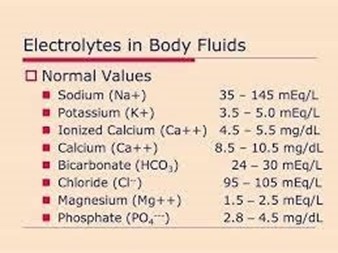Exhibits
Drag from word choices to complete the sentence.
Based on the laboratory data, the client has related to
The Correct Answer is {"dropdown-group-1":"A","dropdown-group-2":"B"}
Based on the laboratory data, the client has:
Option 1: Pre-diabetes
Option 2: Impaired glucose tolerance
The client's fasting blood glucose level of 122 mg/dL (6.8 mmol/L) falls within the range of 100 to 125 mg/dL (5.56 to 6.9 mmol/L), indicating impaired glucose tolerance. This suggests that the client's blood sugar levels are higher than normal but not high enough to be classified as diabetes mellitus.
Impaired glucose tolerance is considered a precursor to diabetes and indicates an increased risk of developing diabetes in the future. It is important for the practical nurse to educate the client about lifestyle modifications to manage blood sugar levels and prevent the progression to diabetes.
Nursing Test Bank
Naxlex Comprehensive Predictor Exams
Related Questions
Correct Answer is A
Explanation
A. Gather the procedure tray and equipment – The practical nurse should gather all necessary supplies for the healthcare provider to perform the thoracentesis efficiently. Preparing the equipment beforehand ensures that the procedure can start promptly and reduces interruptions for missing supplies.
Rationale for Incorrect Answers:
B. Cleanse the site and cover with a sterile towel – This action should be performed by the healthcare provider immediately before the procedure to maintain sterility. The PN’s role is to prepare equipment and ensure the client is positioned correctly.
C. Keep the patient NPO (nothing by mouth) and encourage them to void – While voiding may be encouraged before some procedures to improve client comfort, it is not necessary for thoracentesis. Additionally, keeping the client NPO is not required, as the procedure does not typically involve sedation that would necessitate this restriction.
D. Place the patient in an orthopneic position – This may be done just before the procedure, but the healthcare provider typically directs the final positioning. Initial positioning or seating at the bedside can be done, but orthopneic positioning should follow the provider’s instructions.
Correct Answer is C
Explanation
When a client reports experiencing numbness and tingling in the extremities, it is crucial for the practical nurse (PN) to prioritize reporting the client's electrolyte levels to the healthcare provider. Electrolytes are essential minerals that help maintain the balance of fluids in the body and enable proper nerve and muscle function. Imbalances in electrolyte levels can lead to neurological symptoms, including numbness and tingling.
Options a, b, and d are not the correct priorities to report in this situation:

Whether you are a student looking to ace your exams or a practicing nurse seeking to enhance your expertise , our nursing education contents will empower you with the confidence and competence to make a difference in the lives of patients and become a respected leader in the healthcare field.
Visit Naxlex, invest in your future and unlock endless possibilities with our unparalleled nursing education contents today
Report Wrong Answer on the Current Question
Do you disagree with the answer? If yes, what is your expected answer? Explain.
Kindly be descriptive with the issue you are facing.
